
- Home
- News
- Analysis
- States
- Perspective
- Videos
- Education
- Entertainment
- Elections
- World Cup 2023
- Features
- Health
- Budget 2024-25
- Business
- Series
- NEET TANGLE
- Economy Series
- Earth Day
- Kashmir’s Frozen Turbulence
- India@75
- The legend of Ramjanmabhoomi
- Liberalisation@30
- How to tame a dragon
- Celebrating biodiversity
- Farm Matters
- 50 days of solitude
- Bringing Migrants Home
- Budget 2020
- Jharkhand Votes
- The Federal Investigates
- The Federal Impact
- Vanishing Sand
- Gandhi @ 150
- Andhra Today
- Field report
- Operation Gulmarg
- Pandemic @1 Mn in India
- The Federal Year-End
- The Zero Year
- Premium
- Science
- Brand studio
- Home
- NewsNews
- Analysis
- StatesStates
- PerspectivePerspective
- VideosVideos
- Entertainment
- ElectionsElections
- Sports
- Loading...
Sports - Features
- Budget 2024-25
- BusinessBusiness
- Premium
- Loading...
Premium
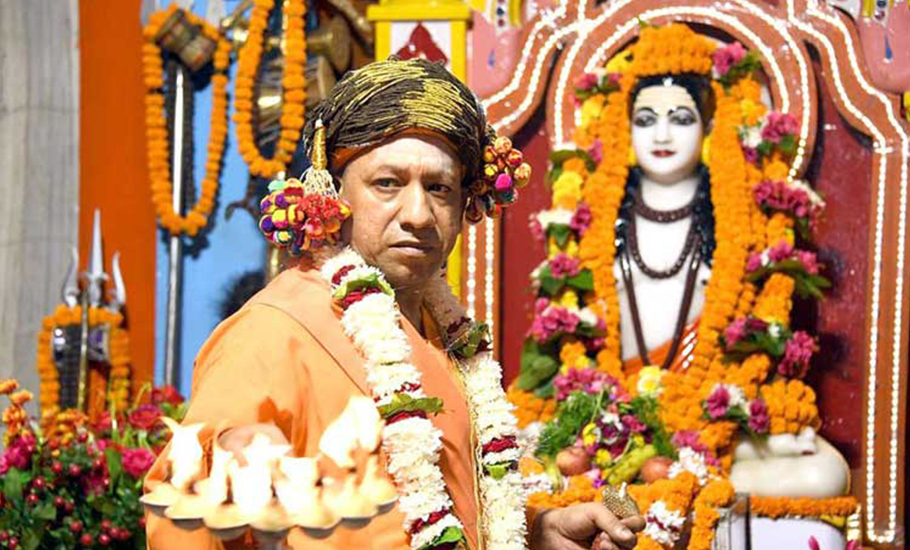
Why Yogi Adityanath’s religious and political life can’t do without Muslims

Back in March 2017, within days of the BJP’s surprise decision of anointing Yogi Adityanath as Uttar Pradesh’s Chief Minister, a host of media reports waxed eloquent about the tolerance and generosity of the communally divisive Mahant of the Gorakhnath Mandir towards members of the Muslim community in his electoral fief of Gorakhpur. From Muslims tending to the Gorakhnath Mandir’s...
Back in March 2017, within days of the BJP’s surprise decision of anointing Yogi Adityanath as Uttar Pradesh’s Chief Minister, a host of media reports waxed eloquent about the tolerance and generosity of the communally divisive Mahant of the Gorakhnath Mandir towards members of the Muslim community in his electoral fief of Gorakhpur. From Muslims tending to the Gorakhnath Mandir’s gaushala to members of the community being helped by the temple trust in redressal of routine grievances, commentaries were made about the syncretism that the Gorakhnath Mandir symbolised and its presiding abbot furthered.
The paradox was as unambiguous as it was perplexing.
As the BJP’s five-term Lok Sabha MP from Gorakhpur and now CM of a state with a nearly 20 per cent Muslim population, the saffron-clad Adityanath’s unapologetic hate for the minority community is well-known. His ultra-right Hindu militant outfit, the Hindu Yuva Vahini (HYV) has, since its inception in 2002, terrorised Muslims under the garb of promoting Hindutva and protecting Hindus from illusory evils like forced religious conversion, love jihad, et al.
The monk-politician has routinely made incendiary speeches against Muslims, fanned communal tensions, advocated the rewriting of India’s Mughal-era history and aggressively lobbied for a Ram Mandir in Ayodhya. The past five years as UP CM haven’t mellowed his prejudices as is evident in Yogi’s most indelible remark this poll season with his likening of the electoral contest as a fight of 80 per cent of the state’s (Hindu) population against the remaining 20 per cent.
And yet, despite indisputable evidence of his bigotry, in Gorakhpur, Adityanath’s religious and political life remains deeply intertwined with the community he so openly demonises. The Gorakhpur Urban constituency from where Adityanath hopes to win his assembly poll is the lone segment of his erstwhile parliamentary constituency of Gorakhpur that has, since his first Lok Sabha win in 1998, consistently given him the lead he needed to defeat his nearest rival. This assembly constituency has an over 15 per cent Muslim population, a majority of which is economically backward and swears by the cooperation and help it receives from the Gorakhnath Mandir and Trust that Adityanath lords over.
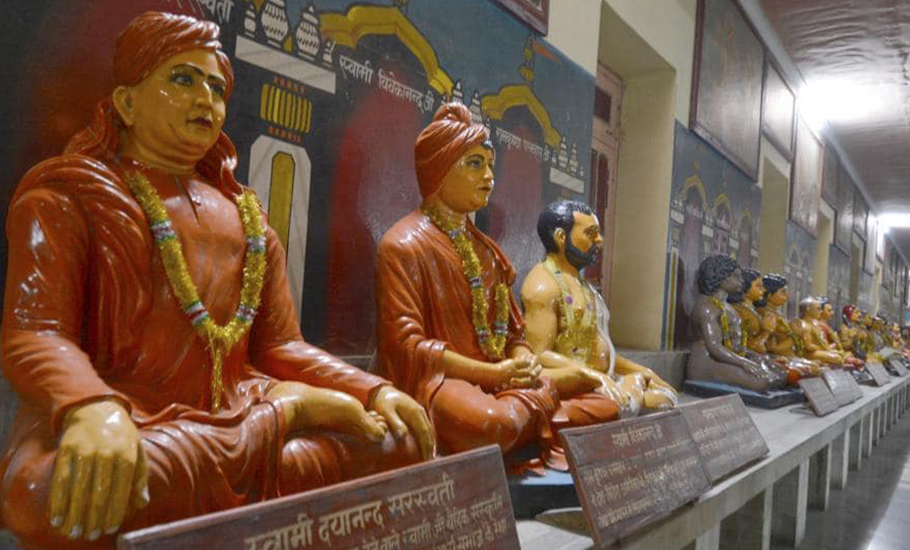
In their recently launched book, Yogi Adityanath: Religion, Politics and Power; The Untold Story, veteran journalists Sharat Pradhan and Atul Chandra cite numerous anecdotes that further emphasise this socio-political and religious paradox. Pradhan and Chandra describe in detail the janta darbar held at the temple premises regularly—Adityanath personally presides over it even now when he is in Gorakhpur—where fariyadees (petitioners) of every faith and caste line up each day to seek redressal of grievances.
Not just within the city limits of Gorakhpur but across several districts of Purvanchal or even other parts of UP, the darbar at Gorakhpur Mandir, which functions under the watchful gaze of temple in-charge Dwarka Prasad Tiwari when Adityanath is not around, serves like the “ultimate court of appeal”, Afsar Ahmed, a construction worker from Sahjanwa town told The Federal. “When nobody in the government is willing to help you, the Gorakhpur Mandir will… you explain your problems and, if you have genuinely been wronged in the view of the temple, a letter will go to the official concerned directing him to take appropriate action. This system works faster than any sarkaari (government) order… no one holding a government position can ignore a letter from the temple,” Ahmed said.
“Even as Yogi Adityanath is better known for his vehemently anti-Muslim stance, no Muslim is denied audience or response at the temple janta darbar. What seems equally incredible is that there is no discrimination in dealing with complaints. The sight of burqa-clad women is not uncommon on any given day,” write Pradhan and Chandra.
The combined history of Gorakhpur’s Gorakhnath Mandir, dating back to the late 1700s, and an even earlier period during which the Nath sampradaya (sect), founded by Gorakshnath/Gorakhnath (accounts on when he lived vary from 9th to 13th century) flourished across the subcontinent, is replete with instances of Muslims being amalgamated into the egalitarian order. The patronage that the tradition received under Mughal rule, including the reign of Aurangzeb, is well documented too.
An oft-quoted urban legend related by scholars Shashank Chaturvedi, David N Gellner and Sanjay Kumar Pandey in their jointly authored paper, “Politics in Gorakhpur since the 1920s: the making of a safe ‘Hindu’ constituency”, is worth reproduction. On the origins of Gorakhpur’s Gorakhnath Mandir, Chaturvedi, Gellner and Pandey write: “The historical Gorakhnath probably lived in the 11th-12th century in the Deccan; local stories refer to a much later successor in Gorakhnath’s tradition… the historical figure is more distant in time, and the mythical figure more recent. The story goes that Asaf-ud Daula, the Nawab of Awadh, came to Gorakhpur to hunt. His followers told him, ‘Sir, since you are here, you should visit the [Muslim] holy man, Baba Roshan Ali Shah.’ Roshan Ali Shah told the Nawab, ‘Since you are here, you should also visit my friend, [the Hindu holy man] Baba Gorakshnath.’ Duly impressed by the two holy men, the Nawab granted half of the territory of Gorakhpur to each of them.”
The historical accuracy of the account of the Nawab meeting Gorakhnath is, for obvious reasons, debatable. What is generally accepted, even by members of the Gorakhnath Mutt, is that the land on which the Gorakhnath Mandir and trust stand today was, indeed, a gift from a Nawab.
“Gorakhpur’s oral history as well as documentary records prove that the land on which the original temple was built was awarded by a Muslim Nawab… land acquired in recent decades for expansion of the temple was also given by Muslims who live in the surrounding areas,” city-based author and former principal of the Kisan PG College in nearby Kushi Nagar district, Dr Vedprakash Pandey told The Federal.
The temple, to this day, is surrounded by localities with a concentration of Muslims from the weaving community and a large number of shops within the precincts of the Mandir are run by members of the minority community who also regularly partake of the langar served at the temple.
Pandey, who edited a compilation of essays on the city, titled Shaharnama Gorakhpur, says “Muslims have always been integral to the Nath sampraday and many members of the community not just in Purvanchal but also from Bengal, Bihar or even Rajasthan and Hyderabad continue to revere Baba Gorakhnath… even the revered Sufi poet, Kabir, who was born in the community of Muslim weavers and was immensely influenced by the teachings of Gorakhnath and many of his couplets are engraved on the walls of the Gorakhnath temple.”
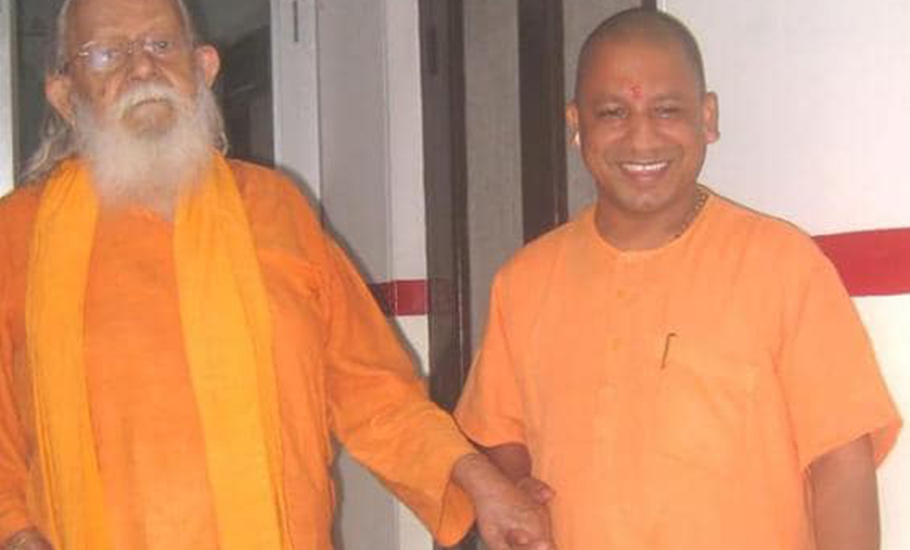
Renowned Hindi novelist and historian, late Hazari Prasad Dwivedi, had also extensively written about the Nath sampraday. Dwivedi writes that Gorakhnath, key disciple of Matsyendranath, “revolted against the distortions in Brahmanism and Buddhism in terms of polytheism and extremism. He laid the foundation of Hindu-Muslim unity and opposed caste discrimination and other evils. As a result members of untouchable castes isolated by the Sanatan dharma joined the Nath sect in large numbers. Muslims joined too.”
It is, thus, not surprising that for centuries Muslims played a key role in propagating the teachings of Gorakhnath and bringing within the fold of the Nath sampraday members of their community, particularly those who were from the lowest economic strata.
The American Methodist priest and Indologist, George Weston Briggs, who spent years traveling around India in the early 1900s wrote in his 1938 book, Gorakhnath and the Kanphata Yogis, that the 1891 Census put the number of yogis in India at 2,14,546. Briggs quotes official data of the time to point out that the Agra and Awadh provinces accounted for 28,816 Gorakhnathis and 78,387 yogis, which included a large number of Muslim yogis.
Later, the 1921 Census pegged the number of Hindu Yogis at 6,29,978 Hindu yogis, Muslim yogis at 31,158 and Hindu fakirs at 1,41,132. In the Census conducted in later decades this categorisation was excluded.
Journalist Manoj Singh, who runs the Gorakhpur Newsline portal and, in 2007, began researching about the Muslim yogis of Purvanchal, including those affiliated with the Gorakhnath sect, told The Federal, “the tradition of Muslim yogis travelling village to village singing compositions from the Gorakhbani, has been around for, at least, over 200 years. This tradition is still alive in parts of Purvanchal and you will still find Muslim yogis in the villages of Gorakhpur, Deoria, Maharajganj, Ghazipur, Kushinagar, Sant Kabir Nagar and Azamgarh.”
The alienation
Singh said that he encountered several Muslim yogis, who consider themselves part of the Nath sampraday. However, he conceded that a large number of them were “under pressure” from members of their own community or from Hindus living in their villages to “abandon the tradition”. “This is what Hindutva politics has done… Yogi and the last two Mahants of the Gorakhnath Mandir (Yogi’s predecessor Avaidyanath and Digvijaynath before him) may claim that the temple is still open to people of all faiths but the rabid Hindutva politics they practised has forced Muslim yogis to either give up their affiliation to the Nath sampraday completely or deny it in public,” said Singh.
Chittaranjan Mishra, professor of Hindi at the Gorakhpur University, told The Federal that there is a “striking dichotomy” between the teachings and principles on which the Nath sect was founded and the politico-religious path its presiding abbots, beginning with Digvijaynath in 1935 to Adityanath in the present, chose to take.
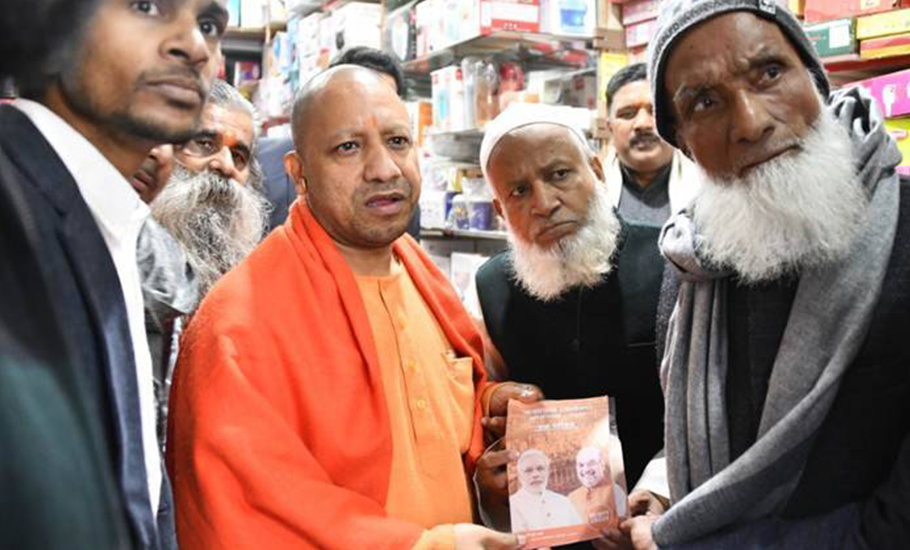
“If you look at the politics of Adityanath, Avaidyanath and Digvijaynath, there is absolutely no meeting point between what they practise and what Gorakhnath preached. Their politics is all about hate and exclusion while Gorakhnath’s teachings were about inclusion, tolerance and transcending the confines of organised religion. And yet, socially, the Nath tradition remains closer to Gorakhnath’s teachings even under Adityanath. Their numbers may have declined because of the communal politics pursued by Adityanath and his predecessors but many Muslims still revere Gorakhnath and the community is still the logistical and economic spine of the Mutt,” Mishra said.
Vedprakash Pandey has been a regular visitor to the Gorakhnath Mandir for over 60 years and claims to have been an eyewitness to the politico-religious role of its three successive abbots since Digvijaynath. He says these paradoxes can only be understood if one separates the politics of the temple’s head from the spiritual and social fabric of the Nath sampraday. “The two co-exist but are also polar opposites. In his role as a politician, Adityanath is heir to the legacy of his predecessors Digvijaynath and Avaidyanath, both of whom, in their political life, betrayed Gorakhnath’s teachings by advocating hardline Hindutva. However, in his role as the Mahant, Adityanath has not tampered with the basic principles of the Nath sampraday and the temple, even under him, remains a place of worship and succour for people of all religions and castes.”
The social adhesive
Pandey feels that the only way to explain this duality, perhaps, is that “the hold that the Nath tradition has over people of different castes and faiths in Gorakhpur and surrounding areas is what allowed these three Mahants to build the broadest possible personal vote bank because the Nath sampraday still has its biggest following among Dalits, backward castes and Muslims… to keep winning elections, Adityanath needs to, at least in Gorakhpur’s social sphere, keep up this charade of not differentiating between Hindus and Muslims, Thakurs and Dalits when they come to the Mandir seeking help.”
It was Digvijaynath who started the trend of mutthadheesh (head of the Gorakhnath Mutt) politicians. Mishra said, “In his politics, Digvijaynath rejected the teachings of Gorakhnath the day he hatched the plot to place the idol of Lord Ram in Ayodhya’s Babri Masjid (in 1949) and laid the groundwork for the Ram Janmabhoomi movement. He used the following of the Gorakhnath Mandir to further his own politics. Avaidyanath, who took over as Mahant in the 1960s and followed his predecessor’s path and then Adityanath, did the same.”
With Prime Minister Narendra Modi at the Centre and Adityanath in UP, at least for now, the definitive shift of India’s socio-political landscape to the Hindu-right is, in a sense, the lasting–and equally appalling–legacy of Digvijaynath. Though Digvijaynath’s electoral success was short-lived–he won his first Lok Sabha election from Gorakhpur in 1967 as a member of the Hindu Mahasabha but died in 1969–his impact on India’s socio-political landscape, as the years have proven, has been enduring.
There is, arguably, no other figure who has had a greater contribution–though rarely acknowledged–to the divisive Hindutva politics we see today than Digvijaynath. Before rising up the ranks of the Gorakhnath temple–he eventually became the Mahant in 1935–Digvijaynath, in the early 1920s, was drawn towards the Congress party that was leading India’s freedom struggle under Mahatma Gandhi’s stewardship. In 1922, for participating in Gandhi’s non-cooperation movement against the British colonialists, Digvijaynath was also jailed. However, when in the aftermath of the Chauri-Chaura violence, Gandhi called off his movement, Digvijaynath got disillusioned with the Mahatma’s path of non-violence.
In 1937, Digvijaynath joined the Hindu Mahasabha and was a close aide of VD Savarkar, the Mahasabha chief and the man who famously coined the word Hindutva. It was Digvijaynath who aligned his Gorakhnath Mutt to the Mahasabha’s rightwing Hindutva politics, in scant regard to the teachings of the Nath sampraday that eschewed any trappings of organised religion. From being influenced by Gandhi to joining the non-cooperation movement in 1922, Digvijaynath, within the next 26 years, became a prominent critic of the Mahatma.
Just three days before Gandhi was assassinated by Nathuram Godse, Digvijaynath, according to authors Krishna Jha and Dhirendra Jha, exhorted Hindus “to kill” the Mahatma. Digvijaynath spent nine months in jail for his alleged role in the conspiracy to assassinate Gandhi but was later acquitted of all charges. A year later, the then Gorakhnath Mandir Mahant was back to his Hindutva antics. On the night of December 22, 1949, idols of Lord Ram and Sita made a “miraculous appearance” inside the Babri Masjid. This happened while Digvijaynath was leading a nine-day long recitation of Tulsidas’ Ramcharitamanas outside the Babri Masjid complex.
In their book, Ayodhya: The Dark Night, Krishna Jha and Dhirendra Jha, write, “The ‘miracle of Rama’s appearance’ on the night of December 22, 1949, was the brainchild of three friends: Maharaja Pateshwari Prasad Singh, the ruler of the princely state of Balrampur, KKK Nair, the deputy commissioner-cum-district magistrate of Faizabad, and Mahant Digvijaynath…who was the chief mastermind behind the idea.” The appearance of the idols was then loudly publicised by Digvijaynath and others of the Hindu-right as proof of the site inside the Babri Masjid being the actual birthplace of Ram and, as an obvious corollary, claim the site for a Ram Mandir.
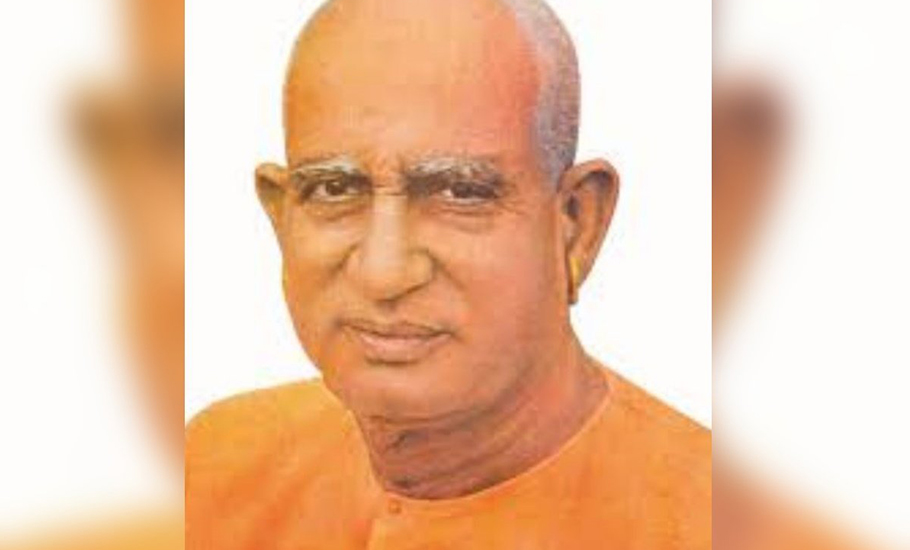
The impact of that one night–and the role that Digvijaynath played–on India’s politics over seven decades later is now abundantly clear. It was that lone incident that, in subsequent decades, provided a ready plank for the rise of polarising and communally divisive Hindutva politics when the likes of LK Advani re-launched the Ram Janmbhoomi movement that ultimately led to the demolition of the Babri Masjid in 1992 and has now, through a Supreme Court verdict, paved the way for construction of a Ram Mandir in Ayodhya.
It is this legacy of Digvijaynath that Adityanath is a direct beneficiary and proud ambassador of. “The syncretism of the Gorakhnath Mutt is visible in Yogi’s politics only when he is nursing his constituency because he needs the votes of the Muslims in Gorakhpur… the Muslims are also aware that they can’t stand up to Yogi; if they are unhappy with his politics they have to keep quiet and simply thank their stars that Yogi’s electoral needs force him to help them… you could say that Yogi as a Hindutva icon is head of the Digvijaynath sampraday but as a lawmaker in Gorakhpur he still needs to keep up the façade of being head of the original Nath sampraday of Gorakhnath,” explains Chittranjan Mishra.

